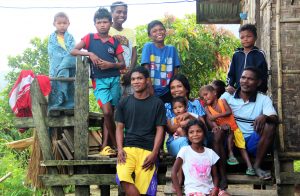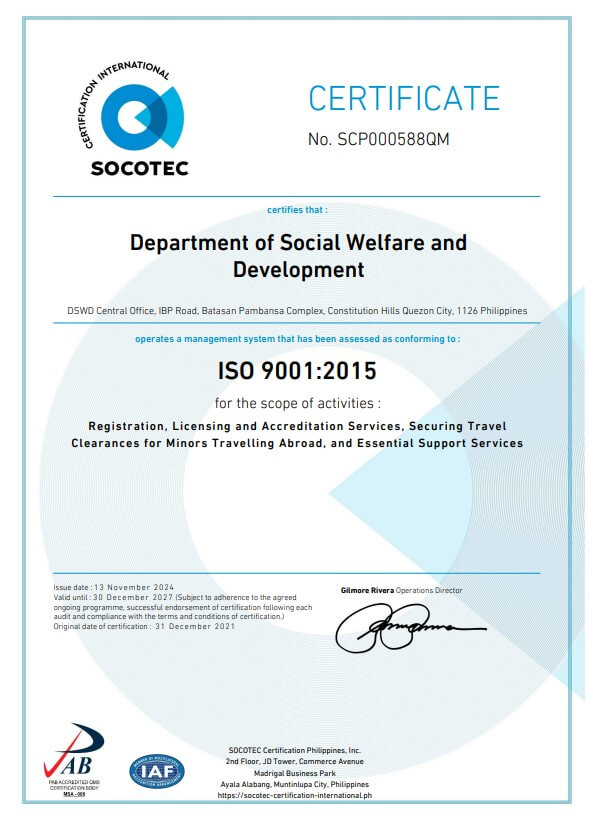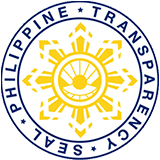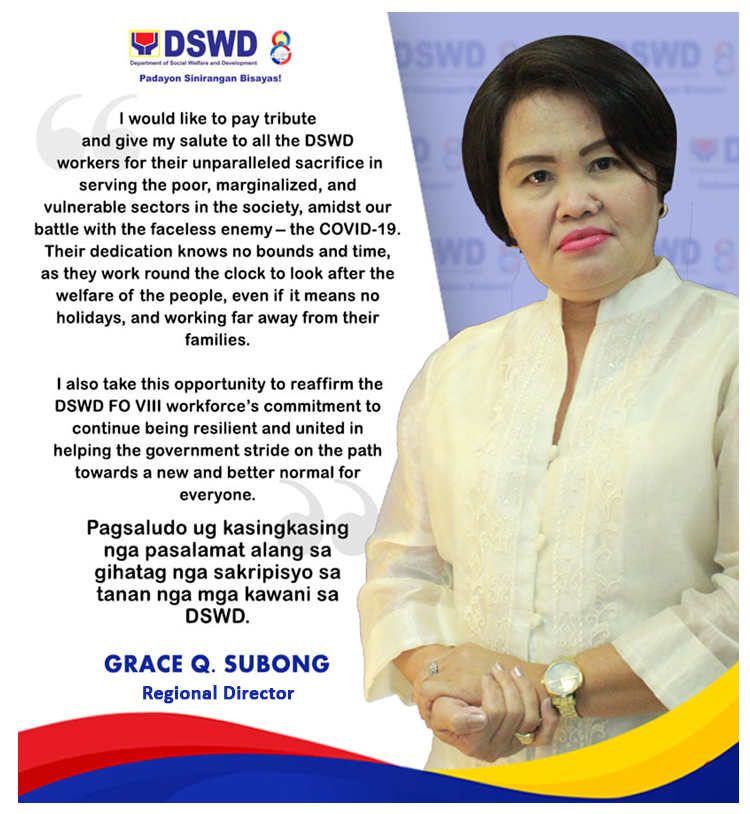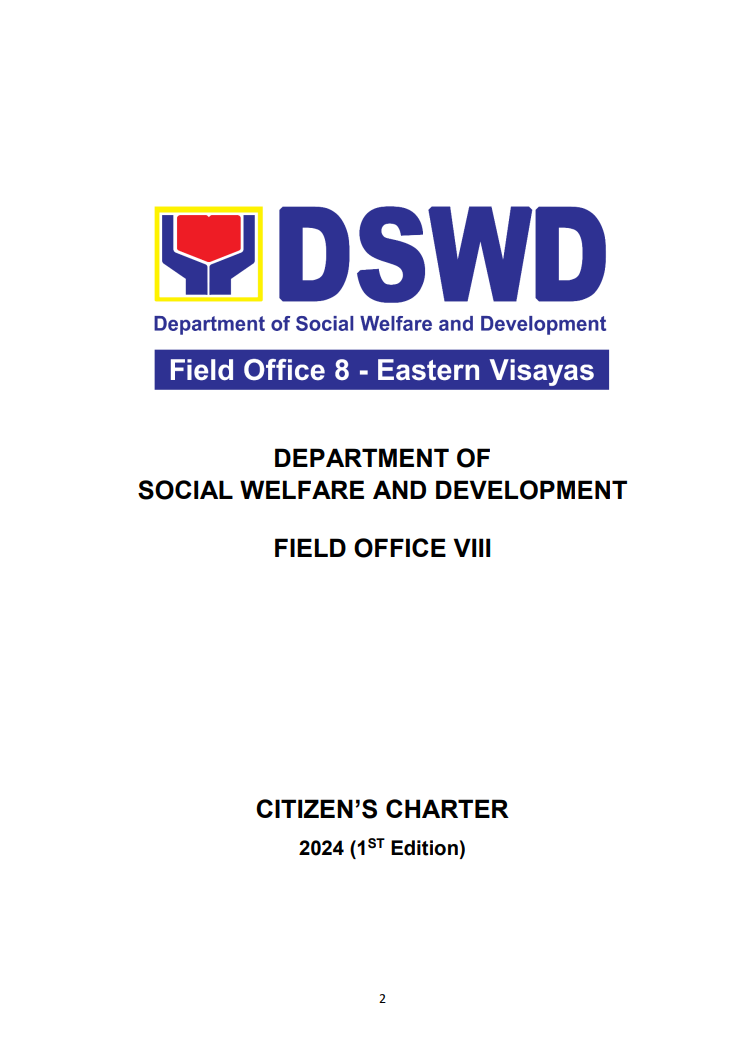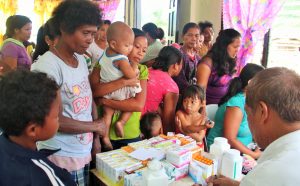
For decades, families of the Mamanwa Ethnic group who are culturally nomadic, left Surigao and crossed the seas heading for the province of Leyte. They say they were born from the land of promise but back there, they have nothing. So, they abandoned their domain in search for a new home.
Now, the Mamanwas are scattered in almost all parts of Eastern Visayas where they are normally referred to as Aetas or ‘Itum’ – which means black, because of their skin tone and striking facial resemblance to the Negritos.
“Tikang kami ha Mindanao gihap, primero kami nag-abot ha Abuyog, ngan didi na ha Burauen. Ako man gud an nag dumara ha akon mga kaurupdan, kay an nakadto kami ha Mindanao, waray gud kami naka-agi nga bulig bahin han pan gobyerno [We came from Mindanao. My family stayed quite some time in the town of Abuyog then we tansferred here in Burauen. I convinced my relatives (to leave our place) because we have nothing in Mindanao. There was no help for us.]”, Bernal Banagbanag, shared.
Some relatives of Banagbanag chose to stay in the mountains of Samar province near Mt. Huraw in San Jose de Buan town. However, due to the existing armed conflict in the mid-80s until 1990s, his relatives followed him to Kagbana, Burauen.
Kagbana is a remote village found in the highlands of Burauen in Leyte. It is located 33 kilometers from the Poblacion area or town proper where one has to brave two to four hours of treading across three mountains and four rivers. Although one has to sacrifice in order to get there, fertile lands and rich resources of abaca and coconut trees are found in this little community.
Life in Kagbana was much safer and peaceful to Banagbanag’s family and relatives, but assimilating to a new community that is not similar with their own customary ways was more of a problem.
“Nakurian anay kami makihuruharampang ha ira. Kami man gud an siyahan nga Mamanwa nga umukoy ngadi ha Burauen. Diri hira sanay ha amon. [It was very difficult for us to get along with them. Maybe, because we are the first Mamanwas to settle in Burauen. They were not yet accustomed with our presence]”, the tribal leader shared.
But, the locals of Kagbana eventually learned to accept the Mamanwa’s existence in their community. As years passed, the Mamanwas consisting of 10 households also learned to mingle with the village people and conform with the latter’s way of living. In order to establish a stronger social ties with them, the Barangay Council resorted to a more political approach.
“Para may partisipasyon an mga Mamanwa, hinimo nga konsehal an usa ha ira na hi Bernal, para mayda manguna ha ira [In order to achieve the Mamanwa’s participation, the Brgy. Council appointed Bernal a Barangay Councilor so that they will be represented]” , Chairperson Gloria explained.
Mano Bernal’s appointment and the Mamanwa’s representation in the council gave them the chance to be acknowledged, where their issues and needs are recognized and addressed through the local government and other agencies.
“Yana, ako it nakadto pangaro hin bulig. Kay nakasabot na ako na it gobyerno mas makabulig kun ma organisa kami ka grupo, pinundok kami para matagan hin bulig [I now assert for our (groups’) needs. Now I know that the government is ready to help us if we will also work for it as an organized group]”, Mano Bernal disclosed.
But the growing relationship between the Kagbana Community and the Mamanwas was even more strengthened through the entry of the Kapit-Bisig sa Kahirapan Comprehensive and Integrated Delivery of Social Services (Kalahi-CIDSS) in the village.
“Mas naghimaupay pa an pagpartisipar nira han pag abot han Kalahi-CIDSS. Tungod kay damo man gud it mga miting, gin hihinay-hinay namon ini hra kay nagkakaawod man ito hira, Gin-inform namon hira pirmi kun may patawag kay it amon paghuna-huna usa na man hira ha amon. Bagan pareho la ha amon [They (Mamanwas) became more involved and concerned in the community when Kalahi-CIDSS came. Through the series of meeting, they begin to dismiss their apprehensions. We always inform if there is a scheduled meeting. We already feel that they are one of us] ”, Prospera Gloria, the Barangay Sub-project Management Committee Chairperson shared.
Through Kalahi-CIDSS, an Empowerment Program of the Department of Social Welfare and Development (DSWD), community members of Kagbana including the Mamanwa group with an increasing population of forty-six individuals were brought together to achieve a common goal, that is to resolve the existing problems in their village. With the activities and mechanism introduced by Kalahi-CIDSS, all residents were involved in the decision-making process in order to develop a barangay action plan and a project proposal to access grants from the said program and other sources for their prioritized solutions.
“Nagkaada kami hin mga aktibidades nga nahatag hin gahum ha mga tawo ug ma-aghat ha ira na makiusa pag solbar han ira problema pinaagi han mga asembleya kun diin tanan hira in pinamamatian ug nagdedesider para ha ira kaupayan [We were involved in activities that empower and encourage us to act as one in solving our problems. Through assemblies, everyone is given the right to decide and be heard for our own betterment]”, Prospera added.
The Kalahi-CIDSS Barangay Assemblies is part of the Community Empowerment Activity Cycle (CEAC) where all households in a barangay are represented in order to discuss barangay issues and the possible solutions to address these problems. All community members from all walks of life especially the marginalized and vulnerable sectors including the senior citizens, persons with disability, and Indigenous People residing in the barangay are encouraged to attend and participate.
“Kun may ada patawag, nakadto man kami kay ginpapa-atender man gihap kami. Ini nga asembleya in nakakabulig kay ginpapakianhan kami kun anu an mga kinahanglanon namon [We already attend when there is a call for meeting, because they invited us. This (barangay) assembly allows us to speak out our own needs]”, Elma Banagbanag, sister of Mano Bernal, explained.
Aside from the inclusive participation provided to them, members of the Mamanwa group were also given equal economic opportunity in the construction of their Kalahi-CIDSS Kalahi-CIDSS Brgy. Health funded by the Millennium Challenge Corporation (MCC). They served as paid laborers during the implementation of the project, receiving 260 pesos per day.
“Natatagan gihap kami hin patas nga higayon. Nagpapasalamat kami na an akon mga kabataan naka trabaho gihap, ngan malipayon na kami na nakakatagamtam na kami hini nga mga bulig, tabang na gihap ini ha bug-os nga barangay [We were given equal opportunities. We are thankful that our children were given the chance to work. We are also happy that this help is not just for us but for the whole village]”, Bernal remarked.
With the power given to the people of Kagbana and the Mamanwas, a new facility worth 1, 577, 820 million pesos has risen. Today, the health station now dubbed as the health center in the forest is serving sixty-four households with almost 315 residents. This was also made possible by the community and LGU contribution worth 166, 501 pesos.
“Now that the health center is fully constructed, the health pesonnel from the poblacion would come to us for our check-ups. Now they can provide vaccination for children and the elders and pre-natal care for pregnant women. The Community Health team of Kagbana consists of mothers trained by the Department of Health also conducts discussions on Family Planning, Parental Care and lessons on some diseases in this area.”, Adelina Calucer, Brgy. Health Officer said.
“Huna namon diri ini matutuman. Bisan pagdara pala han materyales kakuri matabok gud hin bukid ngan sapa. Pero nahimuan man paagi kay naburublig man tanan. Baga ini hin milagro. [We thought this was impossible. The hauling of all construction materials across the mountains and river was unimaginable. But, we surpassed this with the help of everyone including the Mamanwas. This is truly a miracle]”, BSPMC Prospera exclaimed.
After Kagbana’s accomplishment on their Health Station, another breakthrough was achieved by the community’s bayanihan. Six (6) Solar Lamp Posts worth 282,426.00 pesos were lighted through the people’s initiative. Since July 2016, the little village at the peak of Burauen mountains will never be dark again through the solar technology introduced to them.
“Kinahanglan la i-mentenar ini pinaagi hin O&M. May ada na nam gin-alotar na budget para ini masustinar. [All we need to do is to maintain these projects through our Operations and Maintenance group. We already allocated a portion from our annual Barangay budget for our projects’ sustainability]”, said Chairperson Gloria.
As of 2015, a total of 1, 220 Indigenous people from the Mamanwa groups living across the region volunteered for Kalahi-CIDSS and participated in their respective community assemblies. This year, more Mamanwas are expected to join Kalahi-CIDSS through the encouragement of their own Tribal Leaders. With the Community-Driven Development strategy instilled in them, Kagbana Brgy. Council and the Mamanwa group of Mano Bernal vowed to continuously coordinate and work with the Local Government Unit of Burauen and other agencies in order to address their social needs.
Although, there is still more to accomplish in Kagbana, Mano Bernal and his families assured to work together, kapit-bisig with the Barangay Council and Kalahi-CIDSS.

